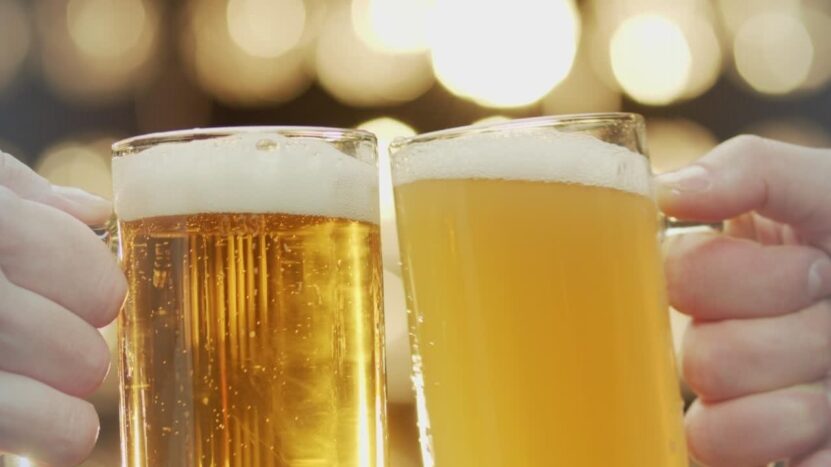When you think about beer, what comes to your mind? For me, it’s the crisp, refreshing sensation that dances across your tongue with every sip. This sensory delight primarily comes from carbonation – those minuscule bubbles that add a world of flavor and texture to this beloved beverage.
But what exactly is this process, and how does it play a role in the brew we drink? Let’s find out and start the fascinating journey of beer and bubbles.
Carbonation in Beverages
This process occurs naturally in some beverages like beer and champagne during fermentation, where yeast metabolizes sugars into alcohol and carbon dioxide. The importance of this process is profound. It provides the effervescence that enhances the sensory perception of beer by influencing its taste, mouthfeel, and aroma.
Additionally, it plays a significant role in presentation, forming the head that releases the aromatic compounds of the brew. So the answer to our question would be yes, beer is carbonated and in the rest of the article we’ll gather all the necessary details to understand the whole process.
What is Carbonation?
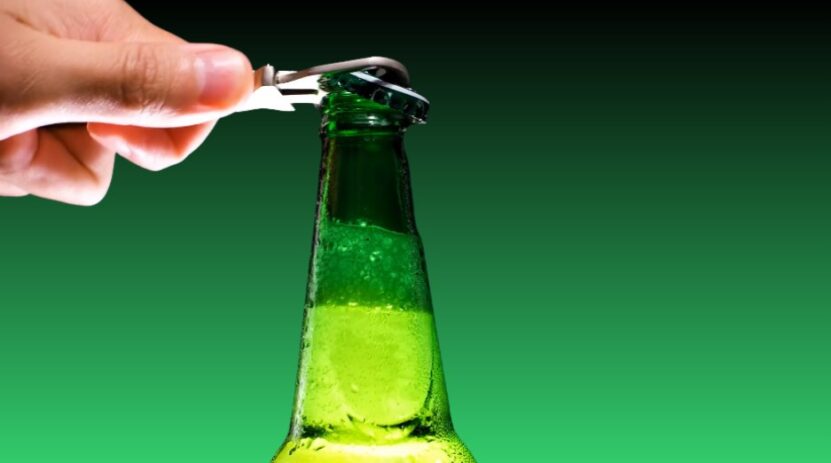
To comprehend the process, one must delve into the microscopic world. Carbonation is a process where carbon dioxide (CO2), a colorless and odorless gas, dissolves in a liquid. In beer production, this happens naturally during fermentation when yeast consumes sugars and produces alcohol and CO2.
The CO2 gas released during fermentation, if captured and kept under pressure, dissolves back into the beverage. The amount of CO2 that can be dissolved depends on the pressure and temperature. The cooler the liquid and the higher the pressure, the more gas can be dissolved.
When you open a bottle of beer, the pressure decreases, allowing the dissolved CO2 to escape in the form of tiny bubbles. This release of gas is what causes the characteristic fizz and foam in carbonated beverages, including beer.
Its History
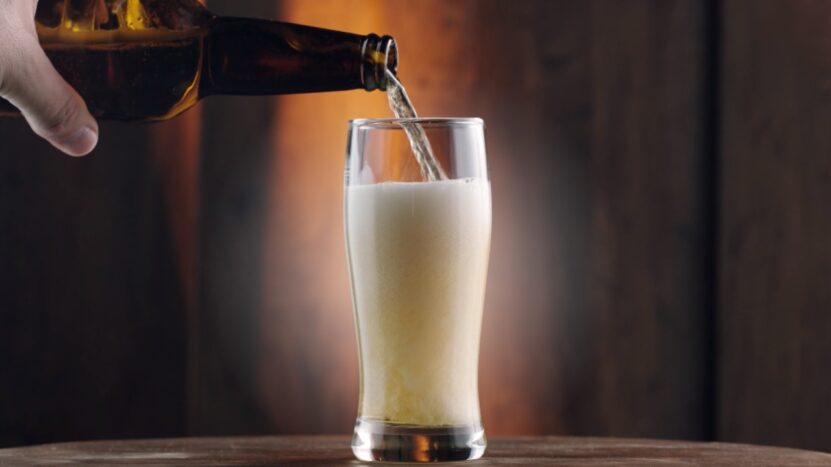
While carbonation might seem like a modern scientific process, it’s been a part of beer brewing for centuries. The earliest brews, however, were probably not carbonated. The ancient Sumerians and Egyptians, who are credited with the invention of the beverage, likely enjoyed a flat, porridge-like brew.
The concept of carbonation in beer likely began with the advent of sealed brewing containers, which allowed the CO2 produced during fermentation to be captured. It was not until the Middle Ages, with the development of superior brewing and bottling techniques, that beverage became consistently carbonated.
Over the years, brewing methods have evolved, and with them, so have techniques for controlling the process. With the rise of commercial brewing, brewers sought ways to ensure the consistency and quality of their beverages, including the level of carbonation.
Different Types
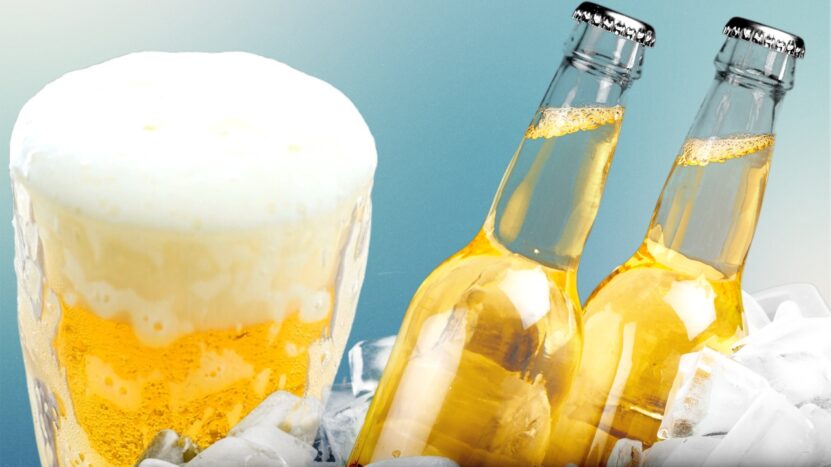
Natural Carbonation
This process occurs during the fermentation process. When yeast consumes sugar, it produces alcohol and CO2 as by-products. In open fermentation vessels, the CO2 escapes into the air. However, if the fermentation vessel is sealed, the CO2 has nowhere to go and dissolves back into the beer, creating natural carbonation.
Bottle-conditioned brews are a prime example of this type of process. After primary fermentation, these beverages are bottled with a small amount of extra sugar. The residual yeast in the beer consumes this sugar, producing CO2 that carbonates the drink right in the bottle. Cask or “real” ales also rely on natural process.
These brews undergo a secondary fermentation in the cask. The CO2 produced is absorbed into the beer, creating a gentle effect.
Forced Carbonation: The Modern Method
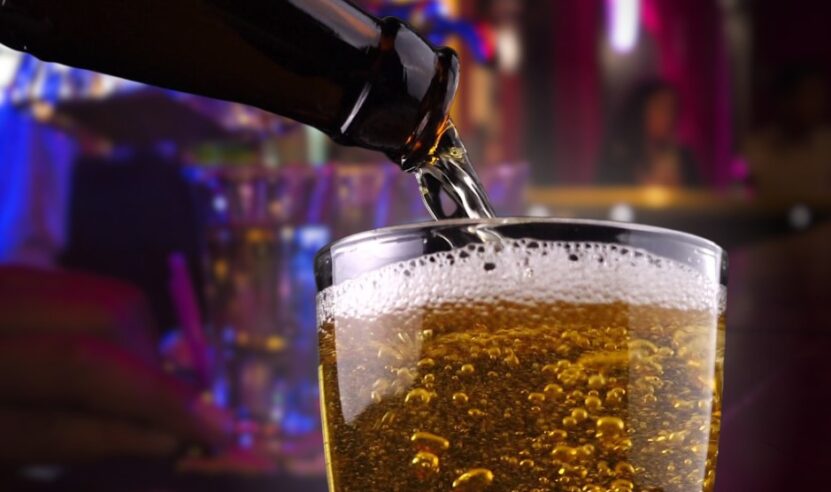
In contrast to the natural process, forced carbonation involves artificially injecting CO2 into the beer. After the beverage has undergone fermentation and the desired alcohol level is achieved, it’s transferred to a sealed vessel. CO2 is then pumped into the brew under high pressure until the desired level of carbonation is reached.
This process offers brewers more control over the final product’s carbonation level. It’s faster than the natural process and reduces the risk of unwanted flavors developing during secondary fermentation.
Factors that influence the process
The fermentation process and yeast activity are critical factors in determining a beer’s carbonation level. During fermentation, yeast consumes sugars, producing alcohol and CO2. The type of yeast used, the fermentation temperature, and the amount of sugar available all influence the amount of CO2 produced.
For instance, ale yeasts, which ferment at warmer temperatures, tend to produce more CO2 than lager yeasts, which ferment at cooler temperatures. Beverages with higher sugar content can also yield higher CO2 levels.
Temperature and Pressure Control
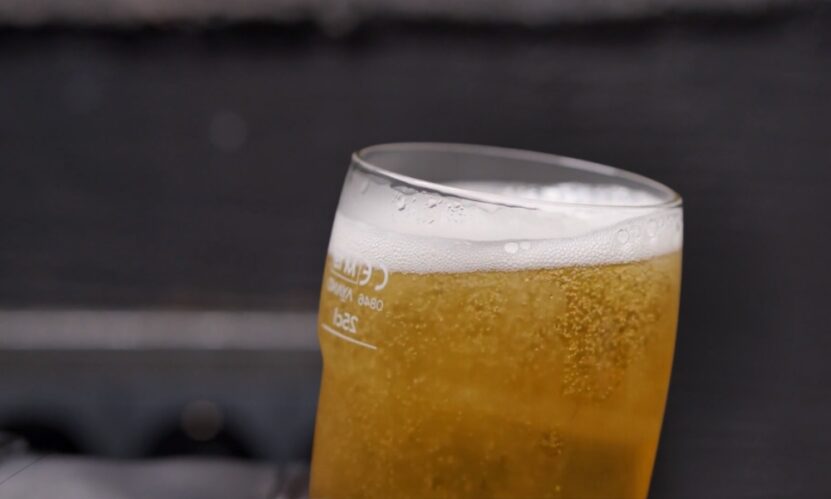
Maintaining appropriate temperature and pressure during and after fermentation is crucial for achieving desired carbonation levels. As a rule of thumb, CO2 dissolves more readily in cold liquids than in warm ones. That’s why beer is often carbonated and served at cooler temperatures.
Pressure also plays a crucial role. The higher the pressure, the more CO2 the brew can absorb. Brewers often use a device called a spunding valve to control the pressure during fermentation and carbonation.
Different Levels in Different Styles
Just as beer styles vary in color, bitterness, and alcohol content, they also differ in carbonation levels. Lagers, for example, typically have high levels that enhance their crisp, clean flavors. Ales, particularly English-style ales, tend to have lower levels, which lets their robust malt and hop flavors shine.
Stouts, especially those served on nitro, offer a unique experience. Nitrogen bubbles are smaller than CO2 bubbles, which creates a smoother, creamier mouthfeel. These variations contribute to the diverse range of sensory experiences in the world of beer, emphasizing different aspects of its flavor and mouthfeel.
The Impact on Flavor and Mouthfeel
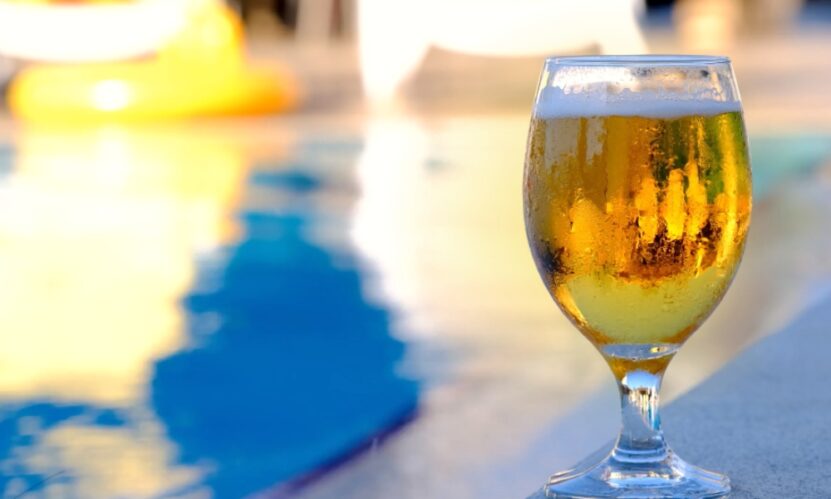
The level of carbonation can significantly influence its overall taste and how it feels in the mouth. Highly carbonated beers often feel spritzy and can carry flavors more quickly to the palate, enhancing the perception of hop bitterness and any acidic or spicy flavors.
On the other hand, beverages with lower levels can seem smoother and allow malt sweetness and complex flavors to come forward. The bubbles created by the process also stimulate the trigeminal nerve in our mouths and noses, adding to the brew’s overall mouthfeel and taste.
The Role of Carbonation in Enjoyment
The pleasure derived from drinking beer is not just about its flavor. The physical sensations produced by carbonation play a crucial role in our enjoyment. The prickly sensation of the bubbles, the refreshing “bite” that the process offers, and the visual appeal of a frothy head all contribute to the whole drinking experience.
Different beers also have different levels of perceived carbonation. A brew might contain a lot of CO2 but not taste very fizzy if its acidity is low. Conversely, a brew with less CO2 might taste more carbonated if it’s highly acidic. The process also plays a role in releasing a beer’s aroma, which is a key part of its flavor.
As CO2 bubbles rise through the beverage, they carry volatile aroma compounds up to the surface and into the air, where they reach our noses.
Refreshment and Satisfaction
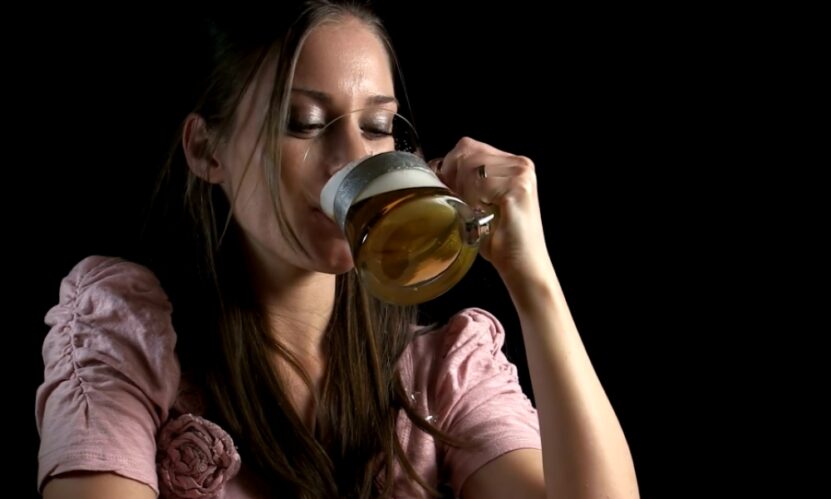
There’s nothing quite like the refreshing sensation of a carbonated beer. The crisp, tingling sensation of the bubbles in your mouth can be incredibly refreshing, especially on a hot day. This is one reason why many lighter, more refreshing beer styles like lagers and pilsners tend to be more carbonated.
But it’s not just about the fizzy feel. Carbonation also impacts how satisfying a beer is to drink. The CO2 in the beverage stimulates the production of gastric acid, which can make you feel full faster. The fizzy sensation also tends to slow down drinking, allowing you to savor the brew longer.
Measuring the Bubbles: Techniques and Standards
To ensure consistency and quality, brewers measure the carbonation levels in their beers. This is usually done using a tester, which measures the amount of CO2 in a brew by pressure and temperature. There are also industry guidelines for carbonation levels in different styles.
For instance, the Beer Judge Certification Program (BJCP) provides guidelines on the appropriate levels for various styles. These range from “low” for certain traditional English ales, to “high” for Belgian ales and German wheat beers. These guidelines not only ensure consistency but also help to maintain the characteristics that define different styles.
However, like any guideline, they are not strict rules. Many craft brewers play with levels to create unique brews that push the boundaries of traditional styles.
Traditional vs Modern Approaches
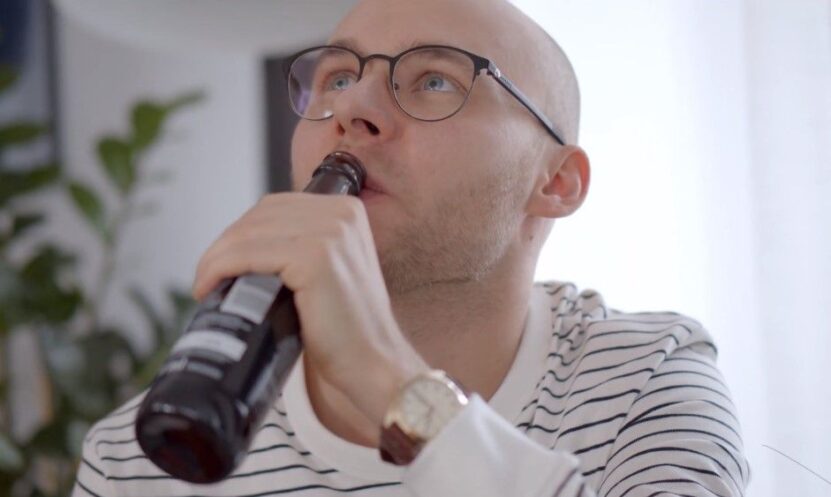
In the world of beer carbonation, two methods stand out: bottle conditioning and forced carbonation. Both have their advantages and drawbacks, and both can produce excellent brew. Bottle conditioning is the traditional method, and it involves allowing the beverage to naturally carbonate in the bottle after fermentation.
This method can add depth and complexity to the brew as it ages. However, it’s a slower process and requires careful control to avoid over-carbonation or bottle explosions. Forced carbonation, on the other hand, involves artificially adding CO2 to the brew.
This method is faster and offers greater control over the final carbonation level. However, it doesn’t contribute to the flavor or texture in the same way as bottle conditioning.
Dispensing and Preserving
How beer is dispensed and packaged can also impact its carbonation. Draught systems use CO2 (or a mix of CO2 and nitrogen) to push beer from a keg and maintain carbonation until the brew is poured. The pressure and temperature of the draught system need to be correctly balanced to ensure the right level in the served beverage.
Packaging methods also play a role. Cans and bottles are sealed to maintain carbonation during storage, but they can lose it over time, especially if not stored properly. Growlers and crowlers offer a way to take draught beer home, but they should be consumed quickly to enjoy the beverage at its optimal carbonation level.
Debunking Misconceptions

Despite carbonation’s importance in beer, misconceptions abound. One common myth is that darker brews are less carbonated than lighter ones. In fact, carbonation levels are determined by the beer style and the brewer’s choices, not the color of the beverage.
Another misconception is that flat beer is spoiled. While a lack of carbonation might indicate a problem like a bacterial infection or a seal failure, it could also be a characteristic of certain styles or a result of improper storage.
Understanding the facts about carbonation can enhance your appreciation, from knowing what to expect from different styles to storing and serving the beverage properly to enjoy it at its best.
FAQs:
Can you remove carbonation from beer?
It is difficult to completely remove it, but allowing it to go flat over time or using specialized equipment can reduce its levels.
Can the process affect the clarity of the beverage?
Carbonation itself does not affect the clarity. However, excessive levels can sometimes cause haze or turbidity.
Can homebrewers control the carbonation level?
Homebrewers can control these levels by adjusting priming sugar quantities during bottling or using equipment.
Does the process affect the alcohol content of the beverage?
No, it doesn’t, the alcohol content is determined by the fermentation process.
Can it vary within the same brand or batch?
Yes, slight variations can occur due to factors like temperature, packaging, or serving methods.
Final thoughts
In conclusion, the answer to the question, “Is beer carbonated?” is a resounding yes. But as we’ve seen, carbonation is not just about the bubbles. It’s a fundamental aspect of beer’s identity, influencing everything from the brewing process to the drinking experience.
Carbonation in beer is a fascinating topic that reveals the art and science behind one of the world’s most loved beverages. From the fermentation process that naturally produces CO2, to the careful control of temperature and pressure to achieve the perfect fizz, this process is a testament to the brewer’s craft.
So the next time you pour a beer, take a moment to appreciate the bubbles. Personally, they’re my favorite part.

